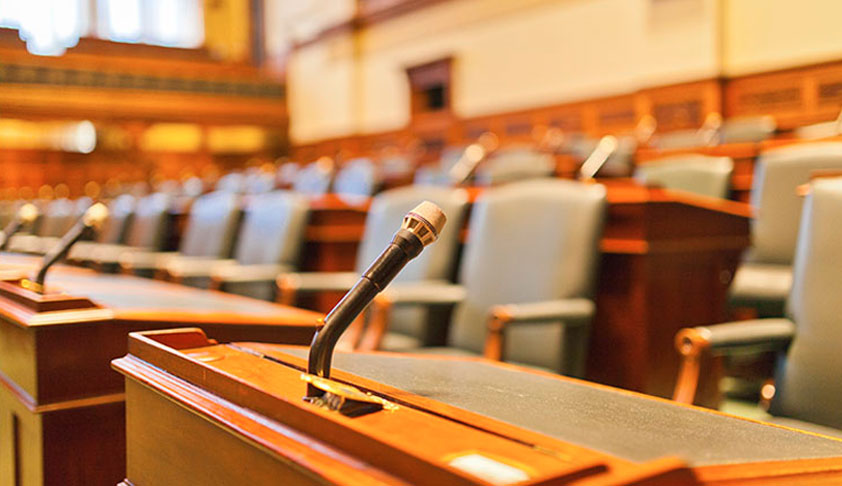Usage Of Mics In The Courtrooms – Another Step Towards Transparency And Accessibility
Avani Bansal
21 July 2017 5:36 AM GMT
Imagine a Monday morning. You have a case listed in the highest court of the land. You have travelled for more than 10 hours to reach New Delhi. You barely had some sleep. You were able to speak to your lawyer on the phone who directed you to be at the Supreme Court around 10 a.m. to manage a Visitor’s pass for you. You stood in a queue, got your pass and at sharp 10.30 a.m. you find...
Imagine a Monday morning. You have a case listed in the highest court of the land. You have travelled for more than 10 hours to reach New Delhi. You barely had some sleep. You were able to speak to your lawyer on the phone who directed you to be at the Supreme Court around 10 a.m. to manage a Visitor’s pass for you. You stood in a queue, got your pass and at sharp 10.30 a.m. you find yourself before the courtroom where the matter is listed. It is jam-packed with lawyers. There isn’t an inch to stand. You see those moving around jostling for space. You enter the courtroom and someone directs you to sit in the place reserved for the visitors, right towards the end of the court-room. You have paid a hefty sum of money to engage one of the best and the brightest lawyers in Delhi. She enters the court, you sigh relief. And then you press your ears hard to hear what’s transpiring in court. Except you can’t hear a thing from where you sit. The travesty of justice begins right away.
Now, imagine an alternative scenario. The Supreme Court is seized of one of the most important cases ever, where it is deciding on something as fundamental as the right to privacy. It is a nine judge bench and the court-room is packed, with lawyers, law students and journalists claiming every inch of the court-room, intending to witness one of the finest legal proceedings ever. While the legal stalwarts present their arguments, most people are hard pressed to listen to what is being said in the court-room. What is in the largest public interest, can hardly be heard by those members of the public who find themselves in that court-room on that given day.
This may sound like fiction but unfortunately it’s reality. While the first story is relatable to most visitors in the Supreme Court of India, the second depicts the actual scenario in the ongoing Aadhar case. While it is not surprising for lawyers who practice in the Supreme Court, it may come as a shock to those who have had the good fortune of never attending a court case – most lawyers and judges don’t use the mics in the courtrooms in the Supreme Court of India. Even though all the courtrooms have mics affixed for usage by the lawyers and the judges, except for in a few courtrooms and by a few judges and lawyers, these mics are hardly being used. Even in the Aadhar case which was heard by the nine judge bench on Wednesday, 19th July, 2017, not all the lawyers and judges used mics. Both from the perspective of the lawyers and the visitors/clients who are present in the courts, it may be tremendously useful if the lawyers and the judges are required to use the mics. This will not only enable the lawyers and the visitors to follow what is being said by the arguing counsel and the judges, but also ensure transparency and an opportunity to learn for one and all present in the courtrooms.
The courts in India are supposed to be ‘open courts’. This means that members of public can come and see what’s happening in a particular case or court-room. While this is good in theory, there are systemic factors that obstruct it from being an open court. For one, only people who have their matters listed on a day can be given a visitor’s pass to enter the Supreme Court. For journalists, only those with permanent or temporary accreditation are given access to court rooms. One can justify this on the ground that there is a need to control the number of people who are in the court at one time. So far so good. But for those people, who do manage to come all the way to witness their case, is it justifiable that all they can do is sit for hours without being able to hear a word of what’s being said in the court? Or is it justifiable, that even during the hearing of one of the most landmark case in the history of the Supreme Court, not all lawyers who present their case and not all judges who pose questions from the bench, decide to use mics?
Some judges and lawyers are soft spoken, making it very hard to follow what is being said in open court-rooms, especially when the court-rooms are packed. Even as an assisting counsel, sometimes it’s hard to hear one’s own arguing counsel and follow up on the questions posed by the judges. Furthermore, since the judges dictate the orders in the court and give directions for the next date, it becomes difficult to follow what is being said in the absence of usage of mics and a great many nuances may be lost on the lawyer in the process. Most importantly, for the clients, who travel all the way to attend the hearings of their own matter, it is pertinent that they are able to atleast hear the arguments that are presented by the lawyers they have engaged and hear the questions posed by the judges. When lawyers and judges don’t use mics, this becomes very difficult.
Another important presence in the courtrooms is that of the journalists who perform the important function of taking the voice of justice to the masses. Only the accredited journalists have access to courtrooms. There are several media and newspaper outlets, which send their representatives to follow up on the cases. These journalists never envy the profession of lawyers who are always standing and running from one court to another with a big load of files. There was an incident where a journalist, who couldn’t hear what was being said, stood right beneath the judge’s dias. The judge wasn’t happy with the proximity and asked the journalist to move away. These incidents should be avoided. The courtrooms should be a place with the highest ‘order’ and ‘decorum’. While there isn’t any easy way to regulate the number of people in the courtroom at any one point of time, there is a way to ensure that atleast everyone can hear what’s being said therein.
You may say, “have we not carried on for all these years, perfectly fine”? Perhaps we have, but that’s not because nobody had a problem but because nobody chooses to speak about this issue and raise it in the court. There are different logical reasons that one can think of as to why lawyers and judges avoid using mics. Sheer inconvenience in switching the mics on and off can be one. The lack of a positive culture on the usage of mics or any rules which encourages lawyers to use mics can be another. But one cannot rule-out the fact that sometimes it may not be in the interest of lawyers and judges to let everyone know the details of what transpires in a case. However, inspite of all these reasons, there is an over-riding public interest in ensuring that the lawyers and judges use mics in courts. In order to maintain the trust and sanctity of the courts and to pay homage to the principle laid down in the famous R v. Sussex Justices, ex p McCarthy [1924] 1 KB 256 – “Not only must justice be done, it must also be seen to be done,” we must add that it should also be ‘heard’ to be done.
Keeping the larger public interest in mind, it is imperative that lawyers and judges switch on their mics in the court-rooms. The need for doing so applies equally to all the High Courts in the country. Therefore, a small step in this direction may go a long way in ensuring that by pressing the ‘on’ button of the mics, we make the current legal system, more accessible and transparent for one and all. While we adjust our eyes to the new courtroom numbers in the Supreme Court of India, why not also adjust our ears to a better audibility inside the court-rooms?
 Avani Bansal is an Advocate practicing in the Supreme Court of India. She has pursued her B.A.LL.B from HNLU, Raipur and Masters in Law from University of Oxford and Harvard Law School. Write to her at advocateavanibansal@gmail.com.
Avani Bansal is an Advocate practicing in the Supreme Court of India. She has pursued her B.A.LL.B from HNLU, Raipur and Masters in Law from University of Oxford and Harvard Law School. Write to her at advocateavanibansal@gmail.com.


